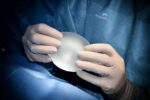Facts About Breast Pain
- Breast pain often have relationship with the menstrual cycle and due to hormone exposure of breast tissue
- Breast pain associated with amninger is very common, but signs of infection should contact a doctor
- When breast pain that is not related to lactation or menstruation cycle, one finds rarely a cause. The pain usually goes by itself within months
What is breast pain?
- Breast pain is relatively frequent. Occurs especially in the age group between 30 and 50 years.
- The symptom often causes anxiety for cancer
- Studies have shown that cancer only exceptionally lead to breast pain. Fewer than 1 in 200 women with breast pain have cancer
Tips for diagnosis
- Pain, which tend to fluctuate with the menstrual cycle, suggest that the hormonal changes are the cause of pain
- When the pain does not vary with menstruation, one often finds no cause of pain. However, the symptom will in most cases disappear – without treatment is required
What can be the reason?
Common causes
- hormone disorders
- Typically, the breasts sore and painful before menstruation. The pain subside when menstruation has begun
- breast pain
- Overcrowded mammary glands
- Available only in nursing, or women who have just finished breastfeeding
- There is soreness and tension in the chest, but no sign of infection. You can often notice a defined area that is “bursting” with milk
- breast inflammation
- Occurs most often in women who are breastfeeding or have just done it
- Arises like a few weeks after birth
- Provides breast tenderness, chest pain, swelling and redness of the skin, fever, chills, headache, decreased appetite, pustilblanding of milk
- hormone Pills
- Use of Pill or estrogens in the menopause can cause tension or pain in the breasts
- Psychosocial problems and relationship problems can be a cause
Rare causes
- breast cancer
- Rarely chest pain
- Other possible symptoms may be fluid from the nipple rash on the nipple or wounds on the chest that do not heal, local pain or tenderness independent of menstruation
- Benign breast lumps
- Does not normally cause pain
- Angina (angina pectoris)
- Leads to pain behind the breast, but can be misinterpreted
- Provides pain behind the breastbone. Pain may increase with physical exertion and pain alleviated quickly by rest
What can you do yourself?
- Cyclic breast pain disappears by itself in 20-30% within 3 months. The pain can be reduced by using a supporting BH and analgesic non-prescription drug
- Non-cyclical breast pain disappears by itself in about 50% of women. The pain can be reduced by using a supporting BH and analgesic non-prescription drug
- If you are breastfeeding and have gotten breast, it is important that you get emptied the chest well. This prevents developing breast infection. The child is not damaged by drinking milk from a breast with mastitis
When should you seek medical advice?
- Concern for severe illness is a reason to seek medical attention. A thorough medical examination to rebut that something is wrong, can help the discomfort.
- If you have breast tenderness with fever and a red and sore area in one breast should be seen promptly by a doctor
What does the doctor?
Medical history
Questions the doctor may ask you:
- How long have you had the genes?
- Ammer you, or are you just stopped breastfeeding?
- Can you be pregnant?
- Describe the pain?
- Do you have other diseases?
Medical examination
- The doctor will examine your chest / breasts
Other studies
- Is rarely needed
- Is a lump in the breast with uncertain explanation, you will be referred for mammography, possibly ultrasonography. There will possibly. be taken a tissue sample with a fine needle
Referral to a specialist or hospital
- Only required if the doctor finds a suspicious nodule
Do you want to know more?
Ask solu- a guide for you to be interviewed in the hospital: “Ask loose” is a guide that helps prepare you for the conversations you have at the hospital. See what questions others in the same situation have benefited from and make your own list that you can take.


